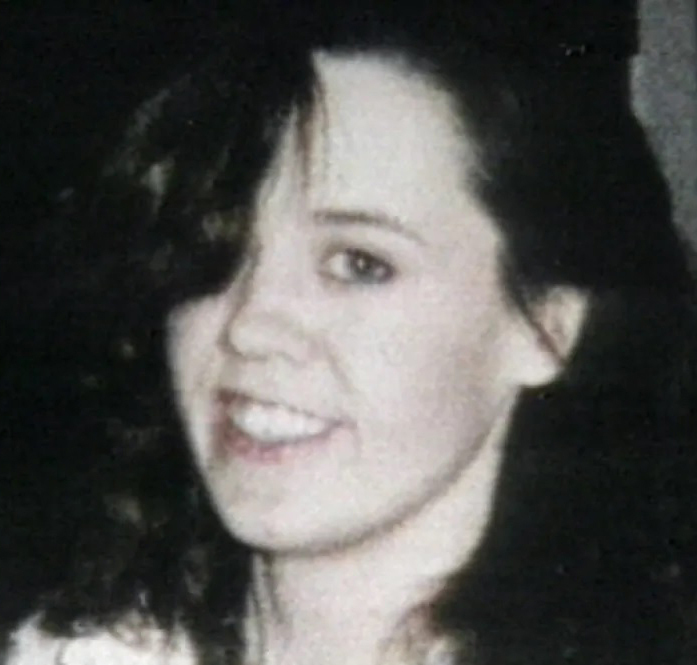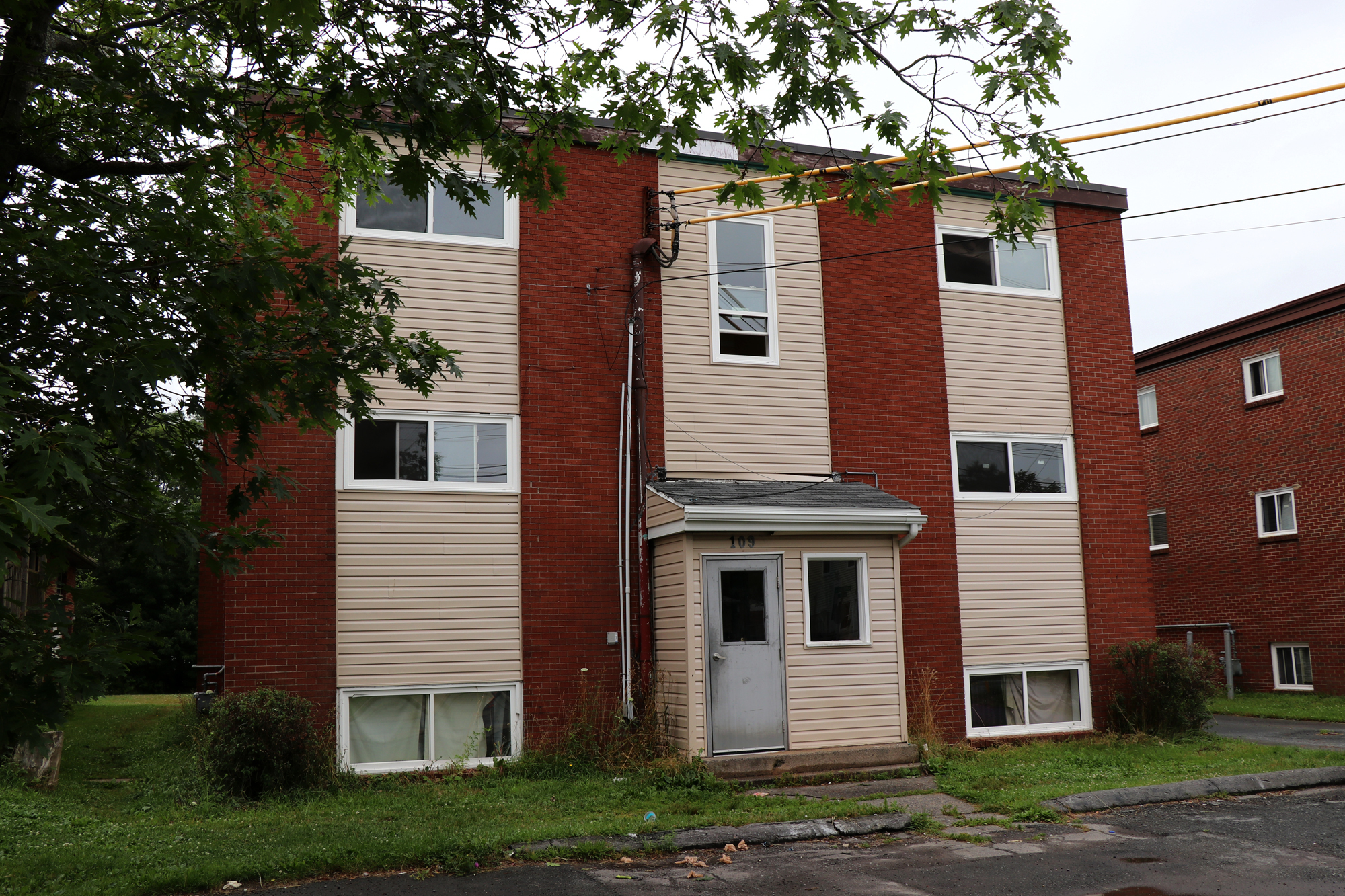By Jon Tattrie and Tim Bousquet
Illustrations by Amedeo De Palma
July 29, 2020
Glen Assoun was innocent of murder, but he was having a hard time proving it.
With his long, dark hair and big, bushy beard, he paced in front of the jury in a Nova Scotia courtroom in August 1999, trying to convince them he didn’t rape the woman he was cross-examining. If he could show he was innocent of that crime, perhaps he could convince the jury he also hadn’t murdered his wife.
Assoun, 43, was defending himself because he’d fired his court-appointed lawyer. He had a Grade 6 education.
He questioned the Crown witness, whom we’ll call Roberta (CBC isn’t publishing her real name as she was the victim of a sexual assault). She had testified she was selling sex in Dartmouth on a cold, snowy night in March 1997 when a man picked her up and ended up torturing and raping her.
She told the court Glen Assoun was the man who raped her, and that during the encounter, he had boasted that he’d killed his common-law wife, Brenda Way.
“You also stated that the individual had a pair of sandals on, is that correct?” Assoun asked her on the stand.
Two sheriffs grabbed Assoun, clamped a hand over his mouth and dragged him past the jury and out of the courtroom.
“Yes,” Roberta answered.
“Sandals on. In the wintertime.”
“Yes.”
“Well, what would you say if I told you in March 1997, I did not live in Nova Scotia?”
The Crown objected.
Assoun had been living in and around Maple Ridge, B.C., when the woman was attacked — police have proof of this. But he hadn’t entered this proof as evidence, and therefore, as a lawyer, couldn’t bring it up in a question.
Indeed, during the course of the trial, Assoun was interrupted hundreds of times by the Crown or the judge on such technical matters.
The judge sustained this objection.
“Leave the jury with the thought that the person wasn’t a very reliable witness,” Judge Suzanne Hood told Assoun. “That’s the objective of cross-examination. Not to get the witness to break down and say, ‘I’m lying.’ Maybe before I retire it will happen, but I haven’t seen it yet.”
“Well, I hope to get to the bottom of this before you retire, with all due respect,” said Assoun.
“I hope this trial will end before I retire,” she said with a chuckle.
Laughter spread through the courtroom. They adjourned. Assoun spent the night back in his cell.
The audio of the next day sounds like a 1940s radio drama. Assoun began by speaking directly to the jury. “Back in June, I told the court that I’m wrongfully imprisoned—”
“Nope,” the judge said loudly. “Mr. Assoun, you are not to address the jury.”
“There’s too much being hid from you that you—”
“No, you are not!” the judge shouted, turning to the sheriffs. “He needs to be taken out of the court.” Two sheriffs grabbed Assoun, clamped a hand over his mouth and dragged him past the jury and out of the courtroom.
“We will adjourn until Mr. Assoun is back in the courtroom,” the judge said quietly. “Sorry about that.”
LISTEN | In this episode of the podcast Dead Wrong, Glen Assoun defends himself in court:
A month later, in September 1999, Crown prosecutor Dan MacRury addressed the jury in a comfortable, confident tone, recapping what he had entered into evidence. Nine times, he rhetorically asked the jury if the case against Assoun was “coincidence or misfortune.”
He asked them to convict Assoun.
Assoun started his closing argument by recalling the moment he learned he was wanted for murder, and how he went directly to the B.C. police to turn himself in.
Again, the judge interceded. “Mr. Assoun, I’m sorry — it is not normal to interrupt somebody’s closing, but you’re giving evidence.”
Assoun looked at his notes. He’d scratched out everything he couldn’t say and struggled to find what he could.
“I am innocent. I’m not claiming to be no angel, because I’m not. I’ve made mistakes in my life, plenty of them. By God, I’m not no murderer,” he said to the jury. “My life is in each and every one of your hands. I ask you, please, please, make the right decision. I’m asking you please.”
Three days later, the jury convicted Assoun of second-degree murder. The judge asked him when he could schedule his sentencing hearing. Assoun spoke, but didn’t answer that question.
“Well, I do wish to say it’s official that I’m wrongfully imprisoned right now,” he said. “The jury made a mistake.”
Assoun went to prison, but that’s not where the story ends. The CBC podcast Dead Wrong explores how an independent investigation using court and police records, legal documents and interviews revealed that his conviction rested largely on police bungling and cover-up, and may have allowed a serial murderer to kill again.
It certainly would not be the last time the world heard from Glen Assoun.
II.
Brenda Way lived a chaotic life full of daring, laughter and violence. Pretty and pale, she liked to wear her jet-black hair loose to her shoulders. Sometimes, she added a dash of red hair dye. She also had two tattoos: a flower on her chest and a butterfly on her back.
Although Way stood five feet tall in high heels and rarely weighed more than 100 pounds, people called her Pitbull. Some said it was because she had a pug nose. Others said it was her ferocity.
When she hung out with her friend Brenda Thompson, they often blasted Prince’s song Little Red Corvette. Something in the lyrics, about living much too fast while seeking a love that will last, resonated with Way.

Brenda Way. (Police handout)
She had sold sex since she was 14. By 28, she had two kids and a drug habit. Most sex workers “strolled” in Halifax, but her independent spirit led her to pioneer a Dartmouth stroll on Albro Lake Road onto Windmill Road. Locals chased her away. Police would wait for a john to approach before blasting lights and sirens. But Way worked her stroll. After all, it was her neighbourhood, too.
Her pimp insisted she wear skimpy clothes and high heels, even in winter. One night in the mid-1990s, Thompson spotted her pregnant friend tottering on the stroll in high heels. Men would buy sex from a woman in comfortable footwear, Thompson insisted. The next time she saw her, Pitbull smiled and pointed to her sneakers.
After her pimp was put in jail in the early 1990s, Way got into a tempestuous three-year relationship with Glen Assoun. They lived as husband and wife — in Alberta for a bit, but mostly in Nova Scotia. She spent three months in jail for prostitution and moved into Assoun’s Fall River cottage when she got out. In 1994, they moved to Cape Breton to spend time with Assoun’s family. Way got clean.
In early 1995, they returned to Dartmouth. They lived in a camper van in Shubie Campground before renting a room in the Four Star Motel, which sat on Prince Albert Road, where the highways narrowed into residential streets. Way got back into drugs and selling sex and Assoun would cruise the Dartmouth streets, looking for her, telling her to come home. Sometimes he beat her up. She left him that July but still saw him occasionally.
LISTEN | This episode looks back at the life of Brenda Way:
In October, she told police Assoun had punched her in the face and thrown her on the bed.
“He asked me if I wanted to know what death felt like,” she wrote in her statement to police. “I am only a little woman. I am tired of the threats.”
Police charged Assoun with assault.
Remembrance Day 1995 started out ice cold but warmed up. It rained a little; the first snow had yet to fall. That evening, Way ran into her friend Linda Grandy while walking to a crack dealer’s house on Portland Street.
After she and Grandy parted, Way visited another friend around 2 a.m. and left at 4 a.m.
A taxi driver spotted her hitchhiking on Prince Albert Road near the Four Star Motel at 4:05 a.m., close to Lake Banook. On fine summer days, Lake Banook hosts the region’s top paddlers as they train for the next Olympics. But as Way passed it, she would have seen a black void and felt a chilling wind.
Some people believe she had been heading to 109 Albro Lake Road, a low-rise apartment complex. If she’d gotten a lift right after the cabbie saw her, she could have made it there by about 4:13 a.m. If she walked, she would have arrived after 5 a.m. She may not have been headed to that address, but rather a nearby crackhouse. One witness said he saw her there at 5 a.m.
The autopsy would suggest Way’s killer had used great violence to end her life.
A stout door guards the entrance at 109 Albro Lake Road. A narrow lane to the right of the small brick building leads to the rear parking lot. Foot-worn paths cut through the thick bushes to connect the parking lot to nearby buildings. Exactly 13 windows overlook the lot, but apparently no one heard or saw anything strange in the early hours of Nov. 12, 1995.
A woman passing by around 7 a.m. saw a woman’s body on the pavement and called police. Brenda Way was dead. Her clothes were partially ripped from her body and one black shoe was missing. The autopsy would suggest her killer had used great violence to end her life.
Michelle Patriquin, who teaches forensic sciences at St. Mary’s University and recently reviewed the crime scene photos and autopsy reports, initially thought Way’s tank top was red. “We now know it was white and it’s soaked in blood,” she told CBC.
Way’s attacker had ruptured her liver with such force that it looked more like damage from a car crash. Her jugular had been cut. Blood pooled and clotted under her neck. She had few defensive wounds, indicating Pitbull didn’t have much of a chance to fight back.
“It looks like a brutal attack,” Patriquin concluded.

In November 1995, Brenda Way was found dead outside this low-rise apart
